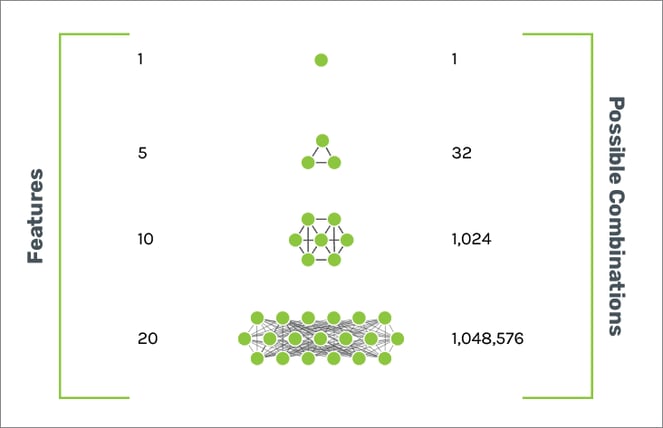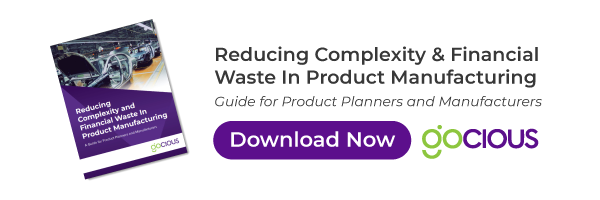
Most hard goods manufacturers are embracing the digital transformation by focusing on their factory floor operations. They are spending millions and, on occasion, billions of dollars on upgrading equipment and streamlining processes. Often though, very little attention is given to the front-end of manufacturing. Why do manufacturers fail to extend their digital transformation to the early product definition, planning, and design stage?
Manufacturers focus on factory processes because they are more readily identified and solved. Removing manual or outdated automation processes and replacing them with AI, machine learning, and robotics streamlines operations and reduces costs. Identifying inefficiencies in the early product planning phase is more challenging, and there are currently not many technological solutions to make significant improvements.
LEARN HOW: Reducing Complexity and Financial Waste in Product Manufacturing
Reasons for Digital Transformation
Digital transformation enhances traditional manufacturing processes with evolving technology to eliminate inefficiencies. Complexity is one such inefficiency. Bain & Company claims there are three types of complexity in manufacturing: product complexity, organizational complexity, and process complexity. They observed that companies focusing on product complexity first do well in improving overall, noting that:
"Most companies usually begin with processes, often through efforts such as 'lean Six Sigma'. Typically the emphasis is on how to execute all their current operations faster and with fewer resources. But that's actually the wrong place to start."
The reason for focusing on product complexity first leads to better outcomes is because complex processes correlate highly to unnecessary configurations. Inadequate product definitions and designs can lead to costly changes down the value chain that could have been otherwise avoided. There is a lot of potential to improve inefficiencies overall by starting at the initial product planning phase.
Harvard Business Review says:
"The more potentially value-generating innovations you add to your company’s product portfolio, the more value-destroying complexity you are likely to embed in your business."
HBR adds that manufacturers should define their purpose well and in a way that guides decision making.
Guiding Decision Making
A product planner’s job is to define a product that will resonate with buying customers and fit within budget and time constraints. However, in terms of digital transformation, they do not have robust tools to help them visualize and make informed decisions based on all the possible specifications and buildable combinations.
Jon M Quigley, from Value Transformation, has worked in product manufacturing for nearly 30 years. In an interview, he told us that to reduce planning complexity, you need to learn as much as you can about the project, as quickly as you can, without spending a lot of time thinking about complicated things to do that well.
But how can product planners contend with all the data about potential product features, weighing those against customer and market demands without being completely overwhelmed?
READ NOW: 5 Things Learned About Rapid Product Development From COVID-19
How can manufacturers properly see all possible configurations and play with the data to consider options when every single feature adds an exponential possibility?

Right now, this process does not have a lot of technological support. Planners usually resort to manual or rigid OXO charts and manual configuration calculations that prevent them from truly innovating product designs as they are bogged down by an insane amount of data.
How Gocious Can Help
Gocious helps manufacturers extend their digital transformation, from project efforts and implementation - all the way through to the very front-end of manufacturing when initial requirements are established, data is gathered, and product decision analysis is conducted.
Most manufacturers do not have a way to capture initial product decision data to streamline the process. And not having this data hinders them from weighing decisions accurately.
Gocious provides a product planning software for manufacturers that enables agility and flexibility in product planning to reduce time-to-market.
To learn more about complexity and how to reduce financial waste in product manufacturing, please download our new eBook below.
Additional Resources:
5 Tips To Better Align New Products To Customers
Product Planners Are Artists & Need Tools To Craft Profitable Products
Manage Product Complexity and Increase Speed to Market



